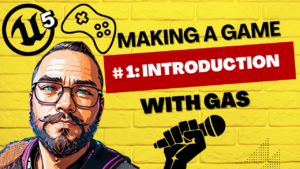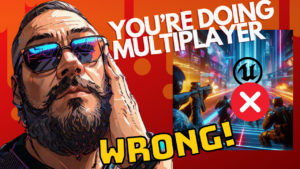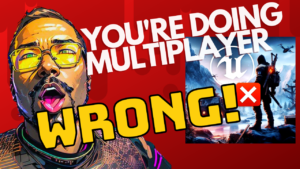
Introduction
Hello, fellow developers! Have you ever delved into the fascinating world of creating multiplayer games? If so, you’ve likely encountered the challenge of synchronizing game state between the server and clients. In this blog post, I’ll guide you through the correct way to replicate dynamic objects, specifically flags, in Unreal Engine. Buckle up, and let’s dive in!
Setting Up Your Unreal Engine Project
- Create a New Project:
- Open Unreal Engine and click on the “Library” tab.
- Launch your preferred Unreal Engine version (I recommend UE5 for its advanced features).
- Choose a project template; for this example, I’ll use the Third Person template.
- Name your project (I’ll call mine “FlagRep”).
- Clearing the Canvas:
- Delete any default meshes in your scene to start with a clean slate.
Creating the Flag Blueprint
- Blueprint Actor:
- Create a new Blueprint Actor (I’ll name mine “Flag”).
- Double-click the blueprint to open it.
- Designing the Flag:
- Add a cube to represent the flagpole. Adjust its dimensions to make it thin and long.
- Next, add a cone (our flag) on top of the pole. Rotate it 90° and position it outward for visibility.
- Fine-tune the height of the pole to your liking.
- Adding a Trigger:
- Attach a box collision component to the flag. Make it larger than the flag itself.
- Position the collision box in front of the pole. This will serve as our trigger.
- Replication Logic:
- Now comes the crucial part: replication.
- Ensure that the flagpole and flag are marked for replication in the blueprint settings.
- Implement the necessary logic to handle replication (e.g., updating the flag’s position on the server and notifying clients).
Placing Flags in Your Level
- Positioning the First Flag:
- Drag an instance of your “Flag” blueprint into your level.
- Rotate it 90° so it faces the spawn points (where players will trigger it).
- Adjust its position as needed.
- Creating Additional Flags:
- Duplicate the “Flag” blueprint for each additional flag you want.
- Name them appropriately (e.g., “Flag2,” “Flag3,” etc.).
- Position them around your level.
- Spawn Points:
- Ensure that spawn points are placed near the flags for easy triggering.
Compile and Test
- Compile Blueprint:
- Always compile your blueprints to check for errors.
- Test Replication:
- Run your game in multiplayer mode.
- Observe how the flags behave across the server and clients.
- Celebrate your successful replication!
Conclusion
Creating dynamic, replicated flags in Unreal Engine involves a mix of design, logic, and replication techniques. By following these steps, you’ll have flags that wave in sync across all players. Happy coding, and may your multiplayer games thrive!
Remember to like and subscribe if you found this tutorial helpful. Until next time, happy game development!








